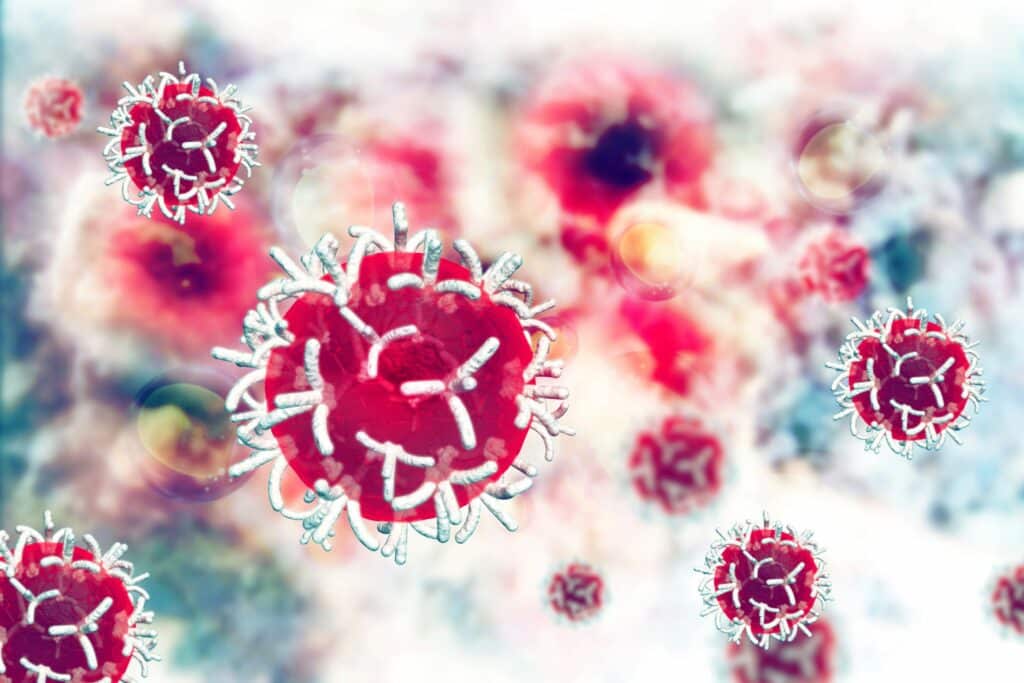Source: The Pig Site, Global Ag Media, 21 February 2022, photo credit: 123RF/crystallight
Pirbright scientists investigate the pig’s immune response to flu and identify specific cells which are important for fighting infection and for long term protection against influenza infection.
It is hoped the findings will shed more light on human response to flu and help the development of new vaccines.
Pigs are natural hosts for influenza and like humans, they can be infected by circulating strains and become unwell. Influenza viruses that infect pigs and humans are different, but some may have the potential to spread between both species, making them important zoonotic viruses.
The immune system in mammals has two different responses to infection, the innate immune response which is a rapid, non-specific response to infection, and the adaptive immune response which is much more specific and follows the innate response.
Scientists examined the adaptive immune response, particularly the CD8 T cell response. CD8 T cells are cells of the immune system that specifically target host cells that are infected with viruses and kill them to prevent the viruses spreading. T cells are important in the host’s immune response to disease and help prevent severe disease.
Published in Mucosal Immunology, this study is the first of its kind to define four different types of CD8 T cells and focus carefully on the tissues where the cells are found. Results showed that the pig immune response differs from that seen in small animal models such as mice or ferrets, which are not natural hosts for influenza. This highlights the importance of using a natural host where possible to gain a more accurate understanding of the disease and to develop treatment and prevention solutions to improve animal health and welfare.
Researchers revealed both the location of CD8 T cells in different pig tissues and how they behave in response to infection. Previously it was thought that the number of T cells in the lungs declines rapidly after infection, however the research shows this is not the case, suggesting longer lasting protection against future infection.
Scientists also explored how CD8 T cells reacted in response to infection by examining differences in gene expression over time. Gene expression was found to be linked to the production of cytokines (chemicals to help the immune system fight infection) and production of different cells in the immune system, in particular tissue resident memory (TRM) cells. TRM cells do not circulate in the blood, but rather remain in tissues such as the lung, providing local protection from infection. Despite these cells having distinct differences from other T cell populations, they are not a completely stable population of cells and continue to change while they are in tissues.
Responses to respiratory immunisation were also explored and demonstrated that nasal vaccination can result in high numbers of CD8 T cells in the airway but does not result in a whole-body immune response as would be seen with an injection directly into the muscle.
“These findings may prove to be crucial for the design of future vaccines against respiratory diseases,” said Elma Tchilian, Head of the Mucosal Immunology group at Pirbright. “Tissue resident memory (TRM) cells are important in respiratory diseases such as flu and COVID-19 and identifying, in detail, where they are located in a relevant animal model is important for our understanding of disease in pigs. This knowledge is also highly relevant to human disease. For the first time we describe the distribution of porcine cells involved in the immune response and their activity over the course of natural infection or vaccination and these are important knowledge gaps to fill.”
The South African Pork Producers’ Organisation (SAPPO) coordinates industry interventions and collaboratively manages risks in the value chain to enable the sustainability and profitability of pork producers in South Africa.








